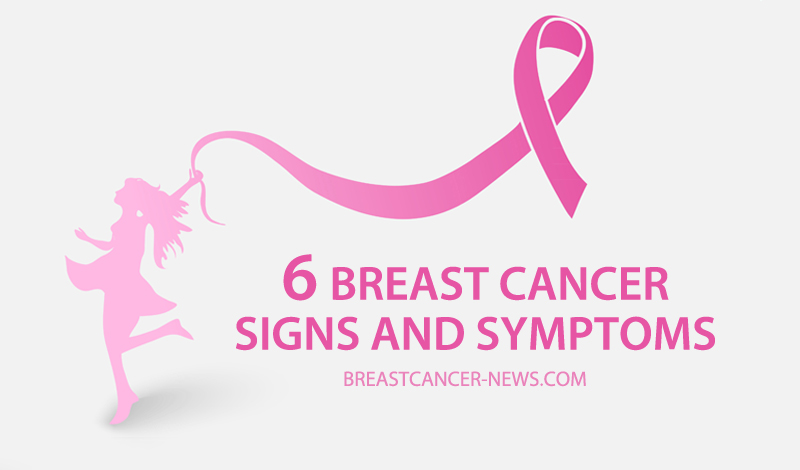Breast cancer is the most common form of invasive cancer in women, accounting for a total of 22.9% of the cancers in women, and 16% of all forms of cancer in the female gender. It is the second most common cause of death among women, behind lung cancer. Self-examination should be done if a woman becomes suspicious of any kind of abnormalities or irregularities in the appearance of her breasts. These include the following six signs or symptoms (click on each link to learn more about each sign/symptom):
- Breast lump or mass: “The most common symptom of breast cancer is a new lump or mass. A mass that’s painless, hard, and has irregular edges is more likely to be cancer, but breast cancers can be tender, soft, or rounded. They can even be painful. For this reason, it’s important to have any new breast mass, lump, or change checked by a health care provider experienced in diagnosing breast diseases,” the American Cancer Society says.
- Breast or nipple pain: Breast or nipple pain is a feeling of discomfort, tenderness, or affliction in any part of the breast or underarm region. It may occur for numerous reasons, and is usually not related to cancer. “Although many women with pain in one or both breasts may be concerned that it is breast cancer, breast pain is NOT commonly a symptom of cancer,” the National Breast Cancer Foundation reports. “There are a number of harmless causes for breast pain and tenderness that may primarily be related to changes in hormone levels.”
- Breast swelling and inflammatory breast cancer: Swelling in one or both breasts can be caused by numerous factors and it is not a common symptom of breast cancer. However, patients who suffer from a specific type of the disease, known as inflammatory breast cancer, may experience breast swelling. Symptoms of inflammatory breast cancer, an aggressive form of the condition, include breast swelling or edema, and redness or erythema, which is noticeable in a third or more of the breast.
- Nipple or breast skin alterations: Women may experience alterations in the skin of their breast, including the nipple and areola. This may be caused by a number of benign conditions, but also by breast cancer. Nipple or breast skin alterations related to cancer include redness, irritation, partial thickening of the skin, a texture similar to an orange, dimpling of the tissue, or alteration of the color of the skin to pink, reddish-purple, or bruised.
- Nipple retraction: Nipple retraction, which can also be called nipple inversion, invaginated nipple, or inverted nipple, is the name given when the point of the breast turns inward or become inverted. The condition can be the result of inflammation or scarring of the tissue behind the nipple, and caused by numerous conditions, not just cancer.
- Skin irritation or dimpling: A breast mass or lump is the most common symptom of breast cancer and is usually what women look for in a breast self-exam. But it is important to look for other alterations in the breast and nipple, including changes in the shape or size and the appearance of the skin, like thickness or abnormal coloration. Skin irritation or dimpling, with texture similar to an orange peel, is also a sign that might indicate breast cancer. While it may occur due to other causes, skin irritation or dimpling can be related to inflammatory breast cancer (IBC), a rare but aggressive type of the condition.
Learn more about breast cancer: http://bit.ly/learnBreastCancer
Breast Cancer News is strictly a news and information website about the disease. It does not provide medical advice, diagnosis or treatment. This content is not intended to be a substitute for professional medical advice, diagnosis, or treatment. Always seek the advice of your physician or other qualified health provider with any questions you may have regarding a medical condition. Never disregard professional medical advice or delay in seeking it because of something you have read on this website.

